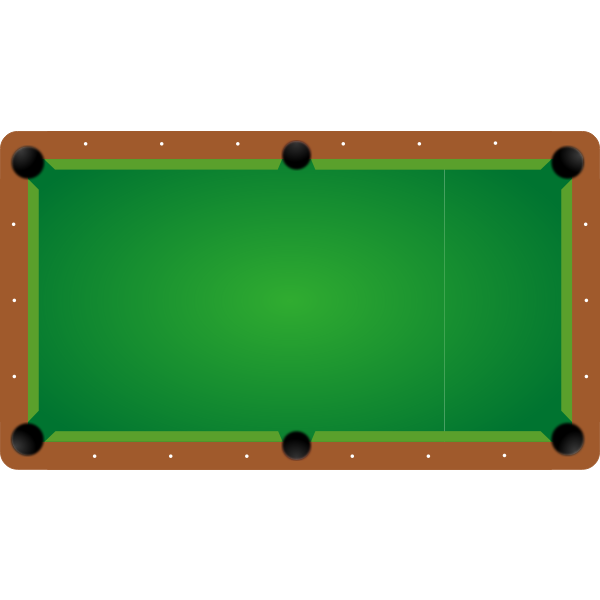Now You'll be able to Have The What Is Billiards Of Your Desires Che…
페이지 정보

본문

Straight pool is played to a specific number of points agreed on prior to the match's start, with each pocketed ball being worth one point to the shooter. If there is no room this side of the spot, it will be placed as close to the spot as possible in a straight line towards the bottom cushion, without touching another ball. In the initial rack in straight pool, fifteen balls are racked in a triangular rack, with the center of the apex ball placed over the foot spot. After the initial rack, the balls are played until only the cue ball and one object ball remain on the table's surface. At that time, the fourteen pocketed balls are racked with no apex ball, and the rack is so placed so that if the apex ball were in the rack, its center would rest directly over the table's foot spot. Once you get used to using a marked cue ball, you can then imagine the same markings on a regular cue ball, allowing you greater control during gameplay.
If the starting position spot for a coloured ball is covered by another ball, the ball is placed on the highest available spot. Coloured ball racking positions must be remembered with care, as each time a coloured ball is potted, it is immediately replaced to its starting position, which occurs multiple times per frame, whereas reds are not returned to the table's surface after being potted. In eight-ball, 15 object balls are used. A number of rules have developed which detail what must be done when one or both of the cue ball and fifteenth object ball are either in the rack area at the time an intragame rack is necessary, or are in such close proximity to the intragame racking area, that the physical rack cannot be used without moving the one or the other. The yields are about 85%, with losses attributed to complete oxidation of the cellulose to oxalic acid. Nitrocellulose (also known as cellulose nitrate, flash paper, flash cotton, guncotton, pyroxylin and flash string, depending on form) is a highly flammable compound formed by nitrating cellulose through exposure to a mixture of nitric acid and sulfuric acid. In the form of collodion it was also a critical component in an early photographic emulsion, the use of which revolutionized photography in the 1860s. In the 20th century it was adapted to automobile lacquer and adhesives.
The glucose repeat unit (anhydroglucose) within the cellulose chain has three OH groups, each of which can form a nitrate ester. The principal uses of cellulose nitrate is for the production of lacquers and coatings, explosives, and celluloid. The process uses a mixture of nitric acid and sulfuric acid to convert cellulose into nitrocellulose. In 1851, Frederick Scott Archer invented the wet collodion process as a replacement for albumen in early photographic emulsions, binding light-sensitive silver halides to a glass plate. Schönbein collaborated with the Frankfurt professor Rudolf Christian Böttger, who had discovered the process independently in the same year. In nine-ball, the basic principles are the same as detailed in the eight-ball section above, but only balls 1 through 9 are used; the 1 ball is always placed at the rack's apex (because in nine-ball every legal shot, including the break, must strike the lowest numbered ball first) over the table's foot spot, and the 9 ball is placed in the center of the rack. A few years later in 1838, another French chemist, Théophile-Jules Pelouze (teacher of Ascanio Sobrero and Alfred Nobel), treated paper and cardboard in the same way.
Ultimately, you’ll want to test a few different bulbs to see what works best depending on your layout, budget and setup. Plus, what is billiards CFL bulbs must carefully recycled due to their mercury content. The explosive applications are diverse and nitrate content is typically higher for propellant applications than for coatings. Some are more ornate and traditional, like tiffany or stained-glass lights, while others are ideal for giving your pub a modern appearance. The 1 - 8 balls are solid colors, while the 9 - 15 balls are striped. Because the game is played to a number of points normally far in excess of the fifteen points total available in the initial rack (in tournament play, one-hundred fifty points), multiple intragame racks are necessary. These scratch guidelines aren’t used in any major professional tournament. One of its first major uses was as guncotton, a replacement for gunpowder as propellant in firearms. It is played using a cue stick, one white ball (the cue ball), fifteen red balls and six colours: a yellow (worth two points), green (three points), brown (four points), blue (five points), pink (six points) and black ball (seven points). On the baulk line, looking up the table from the 'baulk end', the yellow ball is located where the "D" meets the line on the right, the green ball where the "D" meets the line on the left, and the brown ball in the middle of the line.
- 이전글Watch Out: What Erb's Palsy Compensation Is Taking Over And What To Do About It 24.07.24
- 다음글Appel de Service Boulangerie 24.07.24
댓글목록
등록된 댓글이 없습니다.